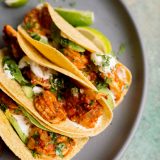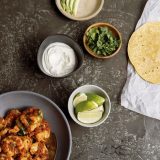A perfectly cooked shrimp—pink, firm but not tough, curved but not coiled—stymies most of us. The window between done and overdone is narrow, the delicious opportunity fleeting.
Yet Diana Kennedy is unfazed as she tosses a kilo of shrimp into a skillet, calm amid the chaos of her terra cotta kitchen, shelves a tumble of bubbling homemade vinegars, drying herbs and bowls of eggs with birthdates marked in pencil.
It’s an ease earned from a lifetime of scouring for the disappearing cuisines of rural Mexico, the kitchen secrets otherwise to be lost as generations fade. And she has acquired more than recipes.
She also has learned to let go, to let the food guide her cooking. She doesn’t fret over the shrimp; she allows them to all but cook themselves.
Yet Zen-like she is not. At 93, the English transplant is feisty and fire-tongued, a curmudgeon who won’t suffer insults to the work she loves.
“The Spanish f---ed everything up!” Kennedy says of Mexico’s colonization nearly 500 years ago. “The only thing they did right was seduce the pig.”
Her thoughts on food writers who misstep on the nuances of Mexican cooking? Don’t go there.
After two days of cooking alongside Kennedy, several things are clear. Her devotion to authentic Mexican cuisine is unparalleled, as is her unwillingness to suffer cheap imitations and those who peddle it. And those of us bold—and lucky— enough to endure her tutelage have much to learn.
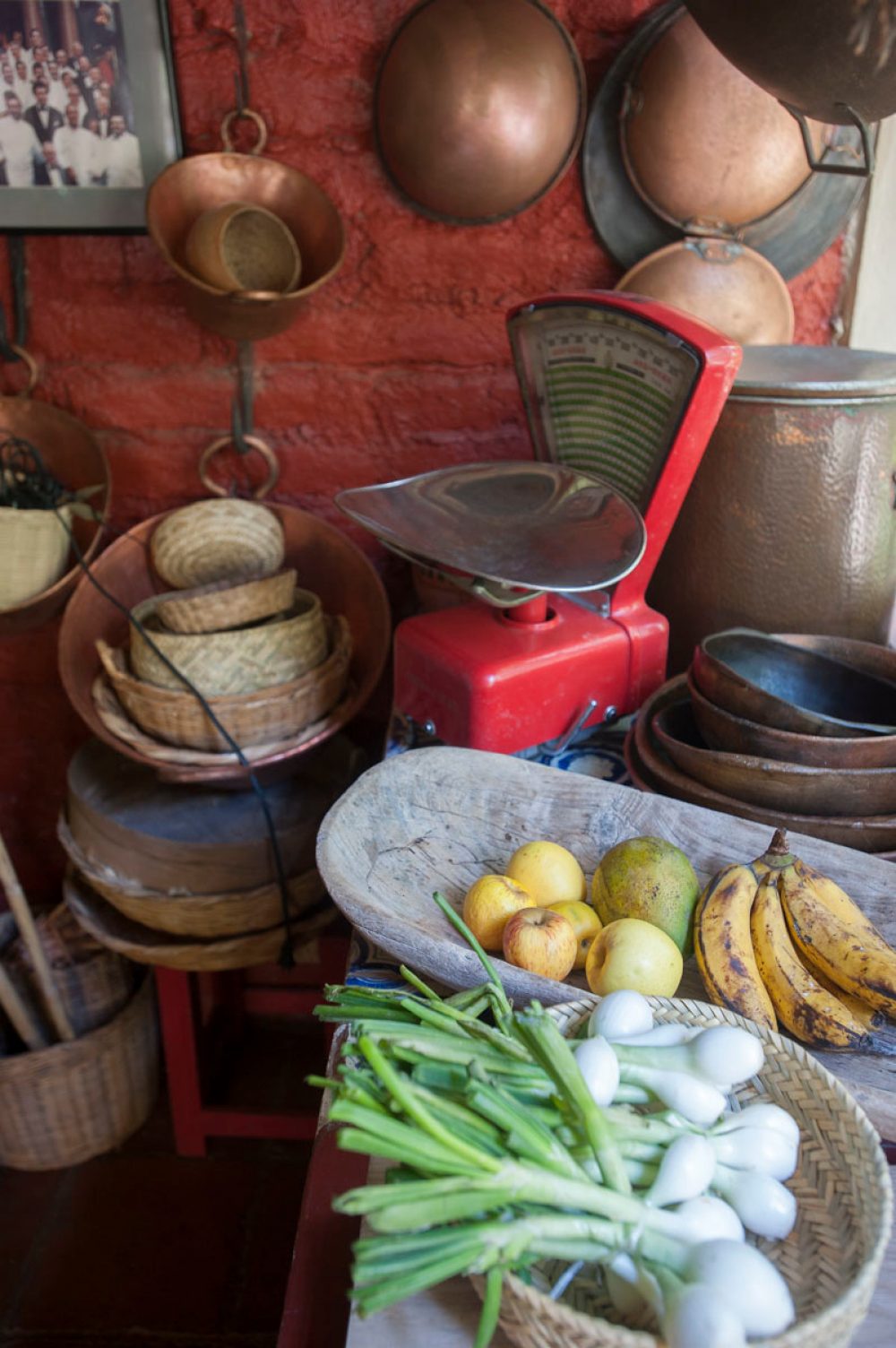
“This is how I like it. Nature interspersed with things to eat.”
Photo: Keith Dannemiller.
Kennedy has chronicled Mexican cuisine for decades, moving to the country in 1957 with her husband, New York Times correspondent Paul Kennedy. He covered Mexico’s political upheavals; she ate her way around the country.
That was derailed in 1966, when Paul was dying of cancer. They moved to New York, inadvertently launching her career. Urged by New York Times food editor Craig Claiborne, she taught Mexican cooking. Soon, she returned to Mexico.
Books—most notably “The Art of Mexican Cooking”—followed, for many readers providing a first glimpse beyond Americanized Mexican food and introducing them to a broad spectrum of regionalized flavors and techniques overlooked.
Today, life has slowed. She still teaches and travels. Still grinds corn for tortillas, grows and roasts her own coffee beans at her home in San Francisco Coatepec de Morelos, three hours outside Mexico City. Still shops at the local market, where she’s quick to complain about a vendor’s oversized tomatillos (“They have no taste!”). But she no longer crisscrosses the country in a battered pickup seeking elusive ingredients and recipes.
“This is a mess,” she says during a tour of her yard, a bramble of trees, serranos and herbs, a riot of nopales and produce, all of it clinging to her home and the hill it is cut into. “This is how I like it. Nature interspersed with things to eat.”
Inside her home, a similar aesthetic rules. A greenhouse jammed with more chilies and herbs (and supposedly a recalcitrant snake) opens off a living room built around a massive boulder. The pantry is crowded with herbs and mezcal, which Kennedy is quick to press on—not offer—guests.
Like her garden and home, Kennedy’s cooking is layered, unhurried and easy. The flavors are bold. Ingredients build one upon the other, creating a more complex whole than the parts suggest.
The shrimp, for example. Standing at her ochre concrete kitchen island, windows and hanging baskets behind her, Kennedy prepares camarones enchipotlados, a Veracruz dish of shrimp in a rich sauce of chipotle peppers and tomatoes.
Onions lightly browned in olive oil lead. “You want to start by flavoring the oil. Flavor! At every stage, flavor!” Kennedy says.
When the shrimp go in the skillet, it is for seconds. They aren’t cooked, just nudged in that direction. It’s the only time they spend over direct heat. Tossing the shrimp with lime juice adds another layer of flavor and is key to the cooking.
Kennedy pulls the shrimp from the skillet. “People cook the shrimp too much and never cook the sauce enough,” she admonishes. That sauce begins with chipotles in adobo sauce, fresh tomatoes and salt, and goes quickly from the blender to the skillet, where it simmers until thickened.
The flavor is bold but not harsh or burning. In Mexico, heat is balanced, a nuance lost in crank-it-up cooking. “They always make it too picante. They add so much chili it burns your mouth,” she says. “There is a type of bravado around how much you can handle. But that is a palate killer.”
The skillet comes off the heat and the shrimp go back in. The residual heat finishes the shrimp, flavoring as it cooks. Two minutes to done.
Back at milk street, it became clear why Kennedy’s laissez–faire cookery works so well. Heat transfers quickly to small, delicate foods such as shrimp. So the difference between perfect and overcooked can be a matter of seconds. What’s worse, the proteins in shrimp are particularly sensitive to heat, leaving little room for error before they become tough and dry.
When Kennedy initially cooks the shrimp, they get enough heat to firm up but not enough to cook through. While the sauce simmers, that lingering heat gently moves inward. Meanwhile, the splash of lime juice is also at work. The acid denatures the shrimp proteins, tightening them and making them less permeable. This means the shrimp lose less moisture.
Once the sauce is thickened, the shrimp are added back, but only off the heat. The roughly 200ºF sauce slowly transfers its heat to the shrimp, fully cooking them to a proper crescent shape in minutes. The result is perfect shrimp prepared with almost no chance of overcooking.
Kennedy and I ate the shrimp spooned into warm corn tortillas topped with avocado and a squirt of lime. She was pleased enough to insist on serving more mezcal. None for herself, though.
“I only allow myself 2 ounces a week,” she said of alcohol. “There is nothing worse than these funky old ladies who have hit the bottle.”
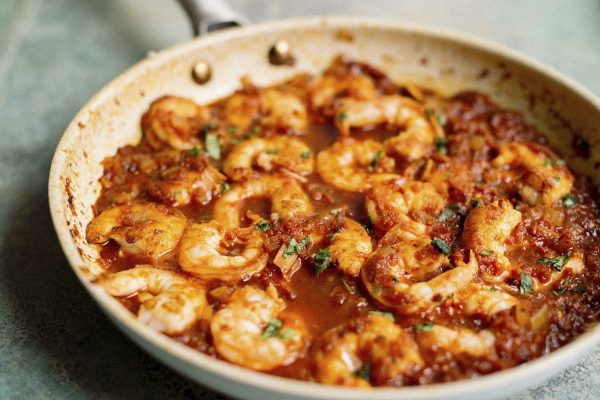
Direct heat can easily overcook delicate foods such as seafood or tender meats and produce. Instead, use the residual heat of a warm sauce or a hot pan or oven to finish cooking food with gentler heat.
To properly cook shrimp, Look for the right curve
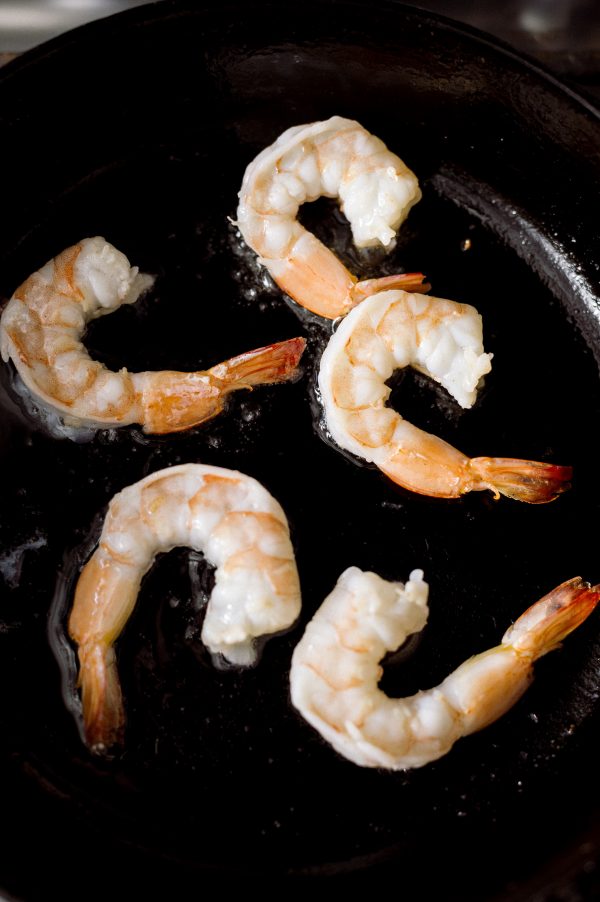
Undercooked shrimp are soft and have a hook-shaped curve.
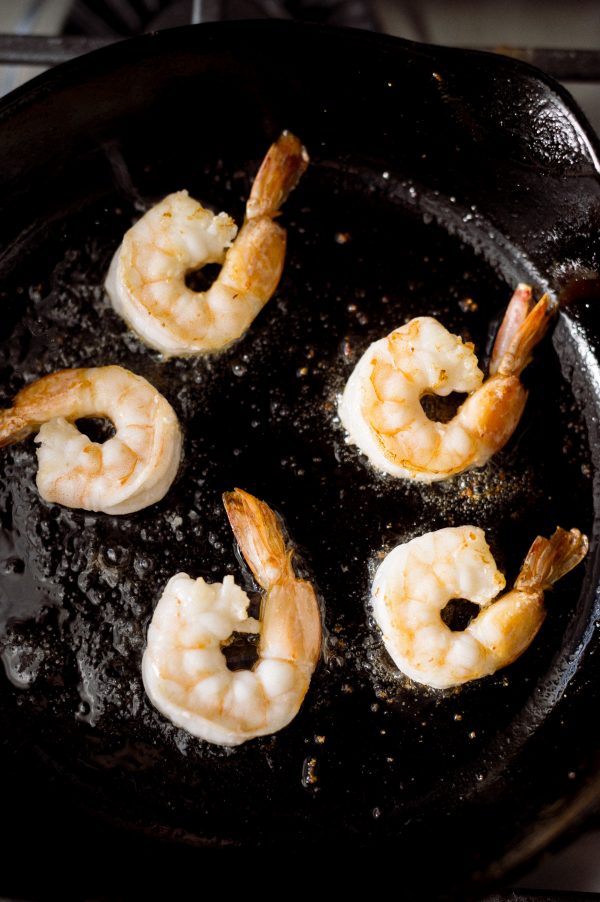
Properly cooked shrimp are firm, with a gentle curve like a C.
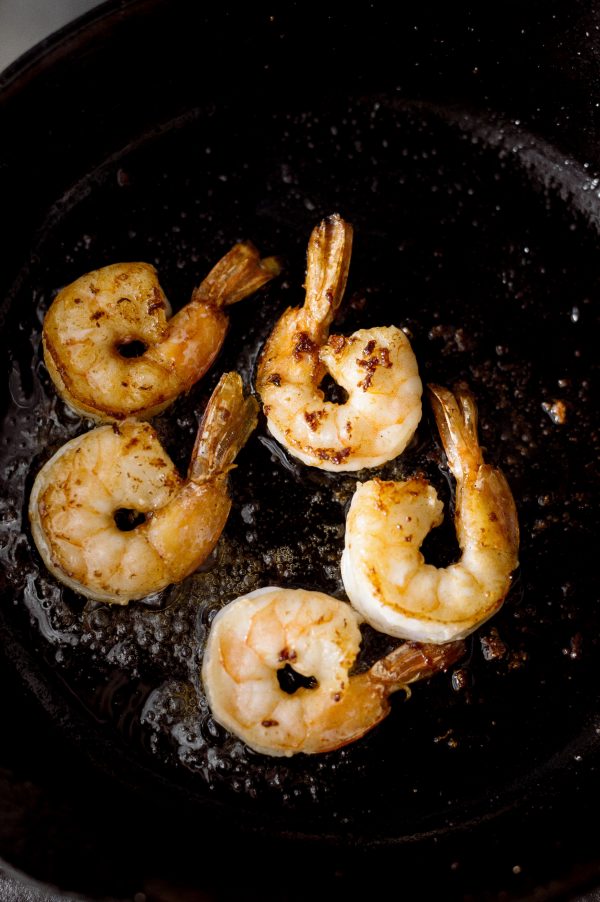
Overcooked shrimp are tough and form a tight coil.
Thanks to their size and protein structure, shrimp are easy to overcook, sometimes in a matter of seconds. While it's true that properly cooked shrimp should appear pink, opaque and firm, those cues sometimes come too late. It's helpful to watch the shape of the shrimp.
Related Recipes
March-April 2017

Sign up to receive texts
Successfully signed up to receive texts!
We'll only send our very best offers - Like a $15 store credit to start.
By entering your phone number and submitting this form, you consent to receive marketing text messages (such as promotion codes and cart reminders) from Christopher Kimball's Milk Street at the number provided, including messages sent by autodialer. Consent is not a condition of any purchase. Message and data rates may apply. Message frequency varies. You can unsubscribe at any time by replying STOP or clicking the unsubscribe link (where available) in one of our messages. View our Privacy Policy and Terms of Service.
